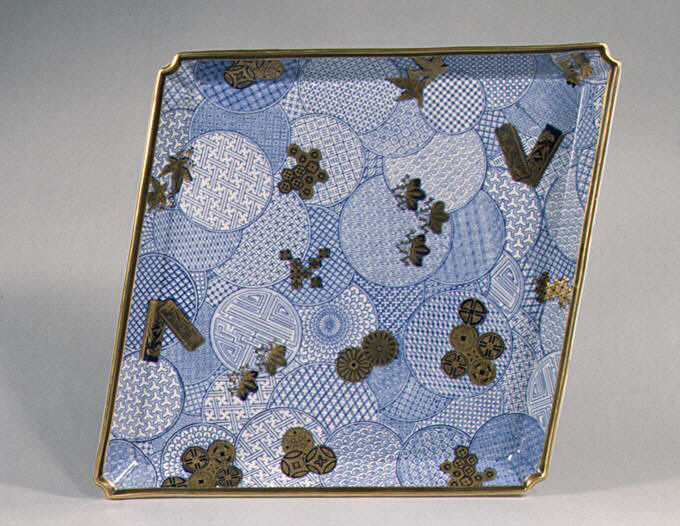Tray
Factory Worcester factory British
Not on view
The lozenge-shaped tray is transfer-printed in underglaze blue with a complex design of circles filled with different ground patterns, as though numerous decorated disks had been spread out over the tray, overlapping and overlapped by their neighbors. Over all are clumps of stenciled motifs in gold, consisting of decorated circles, squares, hexagons, plants, flowers, pen boxes, and leaves. The mark S.Y. in gold on the underside of the tray is that of an anonymous gilder. Other marks are a printed Royal Worcester Company mark, a v for the year I884, and the Company's impressed mark, also crowned.
In 1876 the director of the Royal Worcester Porcelain Company, Reginald Binns, sent back to England a large consignment of Japanese ceramics purchased at the Centennial Exhibition in Philadelphia. Two years later the Royal Worcester Porcelain Company was awarded a Gold Medal for the overall achievement of its entire exhibit at the Paris International Exhibition, in which porcelains in the Japanese taste were conspicuous by their number and variety. The plan of this tray is typical of the "Japanism" of the 1880s, which favored such luxuriant flat effects in contrast to the naturalism of bird, fish, and flower designs preferred in the 1870s in the first phase of Japanese taste. At the time this tray was made, the Royal Worcester Porcelain Company—founded in 1751 and having had several changes of management and ownership—was considered the leading porcelain maker in Britain.
Due to rights restrictions, this image cannot be enlarged, viewed at full screen, or downloaded.
This artwork is meant to be viewed from right to left. Scroll left to view more.




